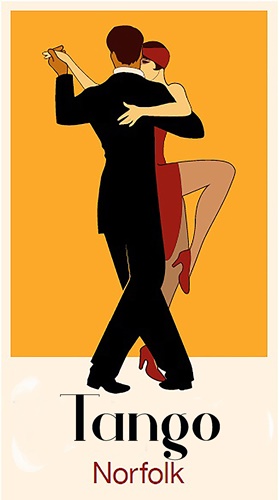Frequently Asked Questions
You have got questions, we have answers! If your question isn’t below, please reach out.
How long do courses run for?
Do I need to bring a partner?
Do women have to be followers and men leaders?
Not at all!
Tango allows for creativity and individual expression, and has a rich history of dancers switching roles or not following the traditional roles of ladies following and gents leading. It is up to you which role you want to learn.
Do I need special shoes or clothes?
For clothes, remember that dancing is light exercise. You won’t need special clothing for class, as long as it’s something that you’re comfortable in and allows you to move freely.
Regarding shoes, you don’t need to buy anything fancy. We recommend dance or indoor shoes that are comfortable and allow you to pivot and slide. Suede or leather soles are ideal for this. As you progress, you may want to invest in tango shoes, but they aren’t mandatory.
A note on high heels: again, they are not mandatory. As long as you are comfortable and can move freely, you do not need high-heels to dance tango.
Regarding milongas: attendees are expected to dress up for milongas. Leave the hoodie for practica and bring out your Sunday best.
Where to buy tango shoes?
A good pair of tango shoes will help improve your balance and posture, as well as looking very elegant! Here are some recommendations when looking at shoes:
- General tips:
- Snug, not tight: the shoes should not feel at all loose, but secure from your heel and ankle to your toes.
- When trying shoes on, we recommend doing it in the afternoon or evening.
- The best material is leather. It is durable and comfortable.
- For ladies:
- If you are choosing high-heels, 7-8cm are ideal, as anything higher may affect your balance.
- Avoid shoes with decorative elements like bows where your heel may get stuck.
- For men:
- Rounded toes instead of pointy, as they will get in the way.
- Tango shoes have lower heels than, for example, salsa shoes. If you can’t find tango shoes, ballroom is a good alternative.
Ready to take the plunge? Here are some suggestions:
- Yuyo Brujo: based in London and made by hand in Spain, their 100% leather shoes can be bought online or their studio.
- Tangolera: Italian-made leather shoes that can be purchased via their British distributor Strictly4dancers.
- Balanceo: want customisation? Balanceo offers low heels, different colours, vegan leather…
- Werner Kern: dance shoes, not exclusively for tango, made with luxurious goatskin.
Tango shoe sellers occasionally attend milongas and expos that may bring them closer to you if you do not feel like buying online or traveling to their shops.
